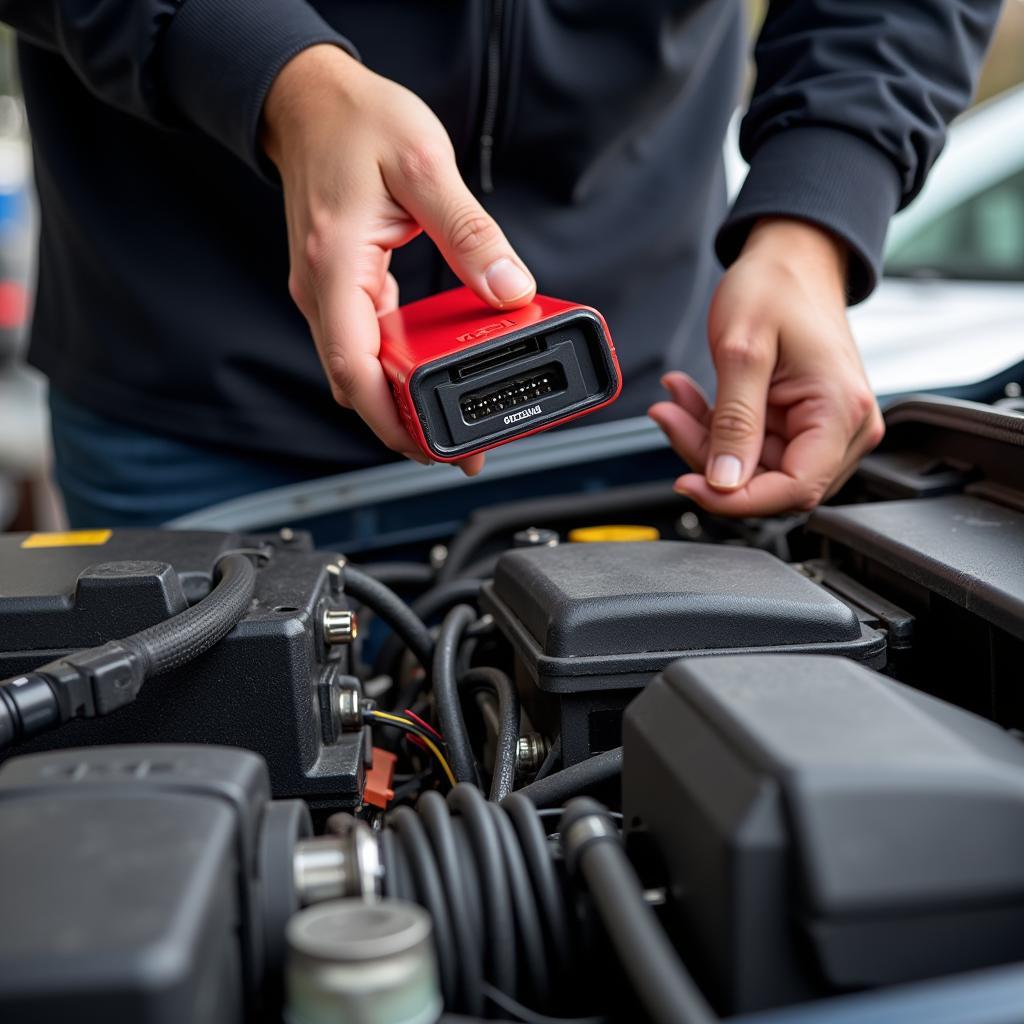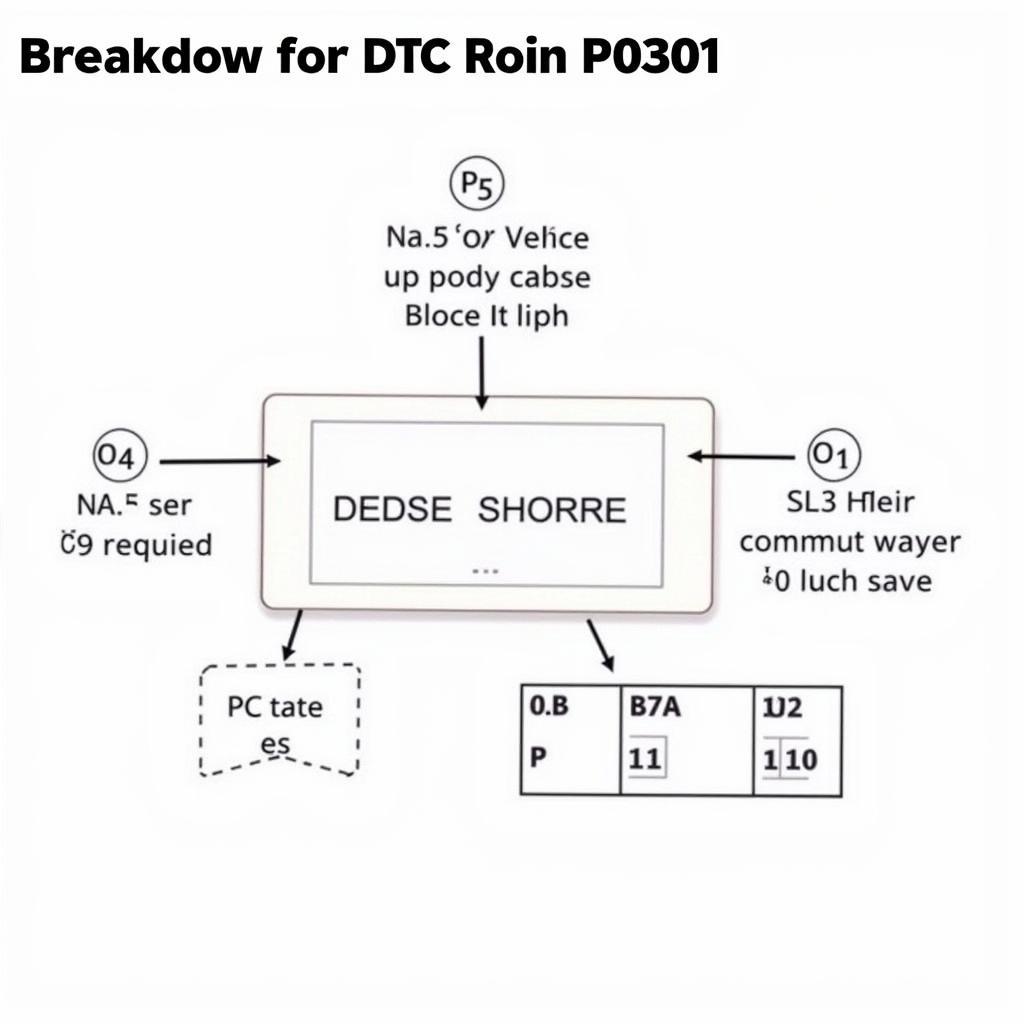Diesel Particulate Filters (DPFs) are essential components of modern diesel vehicles, designed to trap harmful soot particles from exhaust gases. However, these filters can become clogged over time, requiring a process called DPF regeneration. This guide delves into the intricacies of Car Scanner Dpf Regeneration, providing valuable insights for car owners, mechanics, and technicians. Understanding how this process works, and when and how to perform it correctly, can save you time, money, and potential headaches down the road. A reliable obd2 car code scanner is crucial for initiating and monitoring DPF regeneration.
DPF regeneration is the process of burning off the accumulated soot within the DPF, converting it into harmless ash. There are two primary types of regeneration: passive and active. Passive regeneration occurs automatically during highway driving when exhaust temperatures are high enough to burn off the soot. Active regeneration, on the other hand, is initiated by the engine control unit (ECU) when the soot level reaches a certain threshold. This process injects fuel into the exhaust system to increase the temperature and burn off the soot. Knowing when and how to facilitate each type of regeneration is key to maintaining a healthy DPF.
Understanding DPF Regeneration Types
Passive Regeneration: The Automatic Cleanup
Passive regeneration is the most convenient type, happening seamlessly in the background. It typically occurs during sustained high-speed driving, like on highways, where the exhaust gas temperatures are naturally high enough to oxidize the soot. However, if you primarily drive short distances or in city traffic, passive regeneration may not occur frequently enough, leading to DPF clogging.
Active Regeneration: The Forced Cleanup
When passive regeneration isn’t sufficient, the car’s ECU triggers active regeneration. The best scan tool for kia or other compatible vehicles can be used to monitor the DPF soot load and identify when an active regeneration is about to begin or is in progress. During active regeneration, the ECU modifies engine parameters, such as fuel injection timing and exhaust back pressure, to increase the exhaust temperature. This process can sometimes produce noticeable changes in engine noise and fuel consumption.
Using a Car Scanner for DPF Regeneration
A car scanner, also known as an OBD2 scanner, plays a vital role in managing DPF regeneration. These diagnostic tools allow you to monitor various DPF parameters, including soot load, back pressure, and temperature. More advanced scanners, such as a bidirectional scan tool app, can even initiate a forced DPF regeneration. This feature is especially useful when the DPF is significantly clogged and passive regeneration is not possible.
Monitoring DPF Parameters
Regularly monitoring DPF parameters using a car scanner helps you stay informed about the health of your DPF. By tracking soot load and other relevant data, you can anticipate when a regeneration might be necessary and take preventive measures to avoid DPF clogging. Early detection can prevent costly repairs or replacements down the line.
Initiating Forced Regeneration
With the appropriate car scanner, you can initiate a forced DPF regeneration when necessary. This procedure typically involves following a specific sequence of steps outlined in the scanner’s instructions or the vehicle’s service manual. It’s important to perform this procedure in a safe and well-ventilated area, as the exhaust fumes during regeneration can be more potent.
Troubleshooting DPF Regeneration Issues
Sometimes, DPF regeneration might not complete successfully, leading to various issues. A car scanner can help pinpoint the root cause of these problems by reading diagnostic trouble codes (DTCs). These codes provide valuable clues about the specific faults affecting the DPF system.
Common DPF Regeneration Problems and Solutions
Common DPF regeneration problems include incomplete regeneration cycles, failed regeneration attempts, and sensor malfunctions. A car scanner, particularly the best car scan tool, can help diagnose these issues and guide you towards the appropriate solutions. In some cases, a simple software update or sensor replacement might be sufficient. However, more complex problems might require professional attention.
“Regularly monitoring your DPF with a reliable scanner is like taking your car’s pulse. It allows you to catch potential issues early and prevent them from escalating into major problems,” says John Miller, Senior Automotive Diagnostics Engineer.
Preventing DPF Issues
Prevention is always better than cure when it comes to DPF maintenance. Following a few simple guidelines can significantly reduce the risk of DPF clogging and related problems. Choosing the right carly vehicle scanner can offer further preventative insights.
Best Practices for DPF Longevity
- Use the correct engine oil: Using the wrong type of engine oil can contaminate the DPF and hinder its regeneration capacity.
- Avoid short trips: Frequent short trips prevent passive regeneration from occurring, leading to soot buildup.
- Ensure proper fuel quality: Low-quality fuel can contribute to increased soot production.
“Just like a balanced diet and regular exercise are essential for human health, using the right fuel and driving habits are crucial for the well-being of your DPF,” advises Maria Sanchez, Automotive Consultant and Emissions Specialist.
Conclusion
Car scanner DPF regeneration is a critical aspect of modern diesel vehicle maintenance. Understanding how this process works, using a suitable car scanner for monitoring and troubleshooting, and adopting preventive measures can significantly extend the life of your DPF and ensure optimal engine performance. Don’t hesitate to connect with us at ScanToolUS for further assistance. Our phone number is +1 (641) 206-8880 and our office is located at 1615 S Laramie Ave, Cicero, IL 60804, USA.


